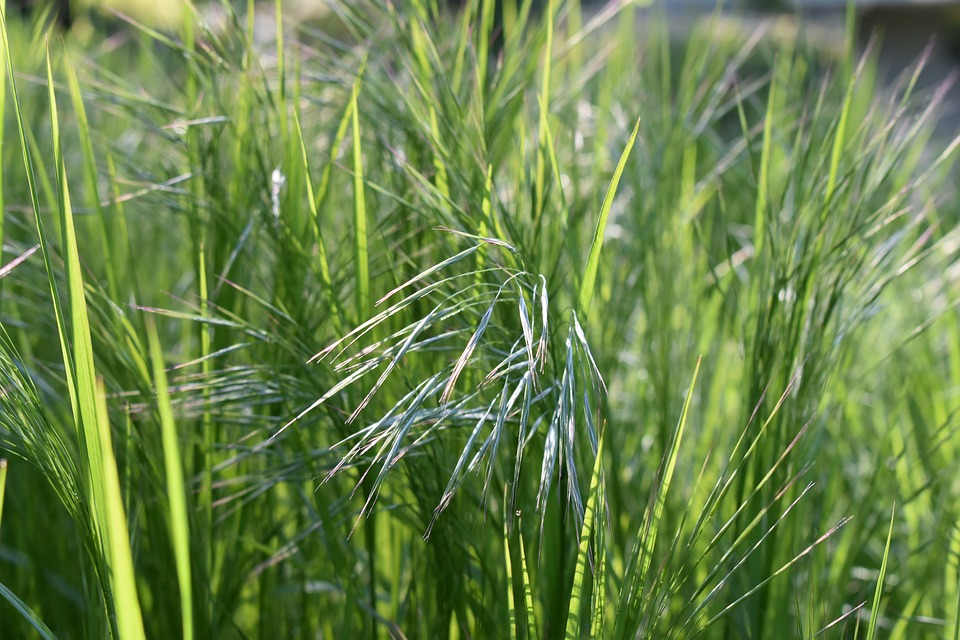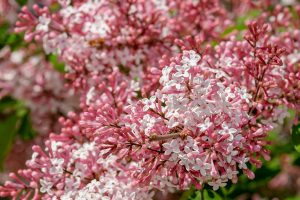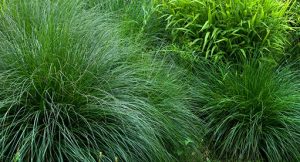These grasses have been increasingly finding their way into backyard gardens due to their elegant but simple maintenance requirements.
Their understated colours and charming shapes are highly appealing to gardeners.

Suggestive names, like turkey foot, cloud grass, bottlebrush and foxtail are inspired by their inflorescences – their subtle flower plumes and tassels.
While most grasses are either categorized as spreading or clump forming, various types may grow to past-your-head or ankle heights. Known to perfectly fit flowerbeds, clump-forming grasses keep a compact shape. On the other hand, a lot of care should be taken, or containers used, when it comes to choosing clump forming varieties as they are known to be quite invasive in nature, with some imported varieties threatening native varieties when allowed to grow uncontrollably in the wild.
Since they usually do not require the use of fertilizers and chemicals, do well with minimal rainfall and a lot of sunshine, grasses are a great choice for environmentally friendly gardeners. Butterflies and birds are also attracted to native grasses, as they enjoy eating them.
Offering a wide range of colours, and appearance, these grasses really thrive during the summer season. Their outline shows against the snow, as they stand up well to harsh winter weather, when left to grow until spring without trimming.
Tips For Growing Ornamental Grasses
- Grasses should be planted in clumps of at least 3 – 4 plants, to enhance their effect.
- For each plant, dig a hole that is about twice or thrice the size of the root clump. Place the plants in the holes, positioning the crown just above the ground to keep it from being waterlogged, after turning out of the pot and separating the roots.
- Wait until early spring to dig up clumps that have grown too big or whose centre has started to die back; leave a generous amount of soil along the edges of the clumps. Pry apart the root ball using a pair of garden forks and then replant them immediately after .
- Cut these plants back during spring right before the sprouting of new growths. Grasses over a metre in height should be trimmed down to about 10cm while those below a metre should be trimmed down to around 5cm.
Design Tips
With a natural planting style that is changing long held border composition notions, Piet Oudolf is a world renowned Dutch garden designer. The designer recently worked along side Martin Wade, a renowned landscape architect, known for the Arrival Courtyard and Entry Garden Walk design at the Toronto Botanical Garden as he seeks to spread his new ideas in public gardens across North America.
The careful selection of plants and their placement is essential to the success of naturalistic gardens which are known to be spontaneous and deceptively wild. When it comes to creating rhythm, excitement, and harmony, grasses are considered to be important elements by Oudolf.
Here is a list of tips when using grasses in a design:
- Combine grasses with some of their natural counterparts: Astrantia (Masterworts), Echinacea (Coneflowers), Sanguisorba (burnets), Monarda didyma (Bee balm) and other meadow flowers and prairie plants are great examples of non-invasive, long-lived and hardy perennials you can consider.
- Since grasses can help bring together discordant hues, experimenting with form and texture should be prioritized over the creation of artistic combinations of colour. The soft airy clouds of Deschampsia cespitosa may be contrasted with the rounded Echinops (globe thistle) flower heads in a typical naturalistic combination.
- You can induce different moods using grasses: You can create a powerful effect by planting grass in uniform blocks, or create a calming effect by repeating the same type of grass. You can also evoke a nostalgic mood by creating a countryside feel by planting grasses in loose drifts.
- Late season perennials that are known to be jewel toned, such as joe-pye weed, various asters, and sedums blend well with the burnished strands of grasses during fall. Furthermore, Miscanthus, Deschampsia and Calamagrotis grasses are known to shine through the frost during winter.





Question. I’ve heard anything bamboo usually spreads like wildfire over time through the garden and even past its borders… I’m a little apprehensive for this reason. How crazy do these grow or can you keep them under control. I guess it’s the root system that would be a concern.
They’re easy to control John. This variety is widely used as a filler in the landscape so you normally want some spreading. Always cut back any overages and they’ll be fine.